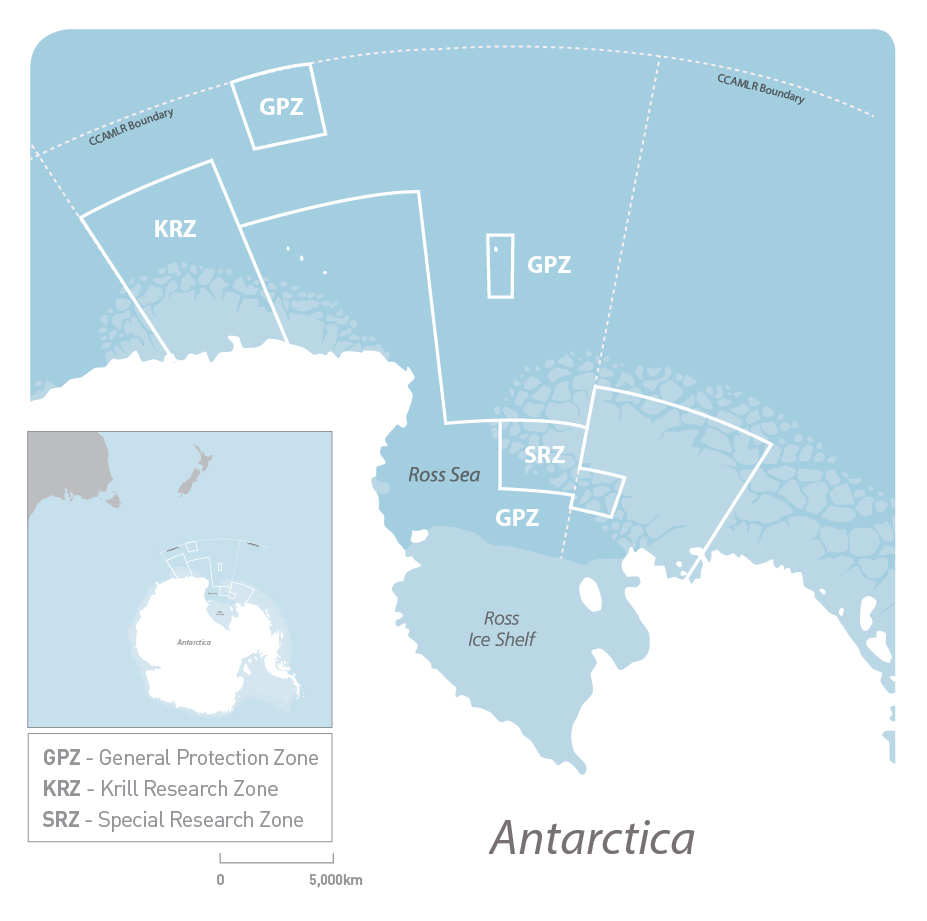Sweeping new protections for Antarctica’s Ross Sea will come into effect on Friday 1 December.
 After five years of debate, the marine protected area (MPA) was agreed in 2016 after a joint proposal by New Zealand and the United States was unanimously voted in by the 25 members of the Commission for the Conservation of Antarctic Marine Living Resources.
After five years of debate, the marine protected area (MPA) was agreed in 2016 after a joint proposal by New Zealand and the United States was unanimously voted in by the 25 members of the Commission for the Conservation of Antarctic Marine Living Resources.
Over 1.5 million square kilometres of the Southern Ocean will be included in a “no-take” zone covering minerals and marine life, forming one of the world’s largest marine sanctuaries.
The Ross Sea is one of the most pristine ecosystems worldwide and is home to seals, whales, seabirds and unique creatures on the seafloor. The MPA will also protect the main nurseries of the Antarctic toothfish so that researchers can determine the sustainability of current fishing activity in the area.
More information is available on the Ministry of Foreign Affairs and Trade website. The SMC asked marine experts to comment.
Assoc Prof Mark Costello, Department of Marine Science, University of Auckland, comments:
“This is globally significant because there is a greater proportion of species unique to Antarctica than any other continent. These ‘endemic’ species have evolved to survive this extreme environment. They need some refuge from the intended and possible collateral damage — bycatch, loss of prey, habitat damage — caused by fisheries.
“Fisheries disrupt natural food webs, particularly when they remove the species at the top of the food web such as large fish, and in the past marine mammals. These knock-on effects are difficult to predict, and combined with the effects of climate change, may result in species extinctions.
“Without control areas like marine reserves we cannot know what the effects of fisheries are. It is a great credit to New Zealand, USA and the many other countries that persisted to convince others to set aside this part of our shared ocean as a refuge for nature.”
Dr Stuart Hanchet, Principal Scientist, Fisheries, NIWA comments:
“It’s hard to think of a more significant event in the history of marine conservation. To get the agreement of 25 of the most powerful nations on the planet to agree on a Marine Protected Area of this size is nothing short of breathtaking and gives us hope for the future.”
Dr Regina Eisert, Gateway Antarctica, University of Canterbury, comments:
“The Ross Sea region is one of the few remaining marine ecosystems that retains all of its top predators, including whales, seals, and large predatory fish including Antarctic toothfish.
“Toothfish have been fished commercially in the Ross Sea since 1997, and New Zealand researchers and fishing companies actively contribute to the sustainable management of the fishery through CCAMLR.
“This means preventing permanent changes to the ecosystem as a result of fishing, for example changes resulting from the reduced availability of toothfish to predators such as killer whales and Weddell seals.
“To protect the Ross Sea region as a globally significant marine ecosystem, NZ and the USA successfully proposed to CCAMLR the establishment of the world’s largest Marine Protected Area (MPA). The objectives of the MPA specifically mention protection of top predators from the effects of fishing.
“However, top predators will not only benefit from sustainable management in the Ross Sea region, they can also help implement it. By virtue of their position at the top of the food web, predators such as Weddell seals and killer whales are sentinel species that integrate the cumulative effects of multiple external drivers on the ecosystem, both due to natural variation in ocean productivity as well as human factors such as marine protection or climate change.
“The proposed research and monitoring of key top predators as part of the plan for the new MPA will provide the scientific basis for exemplary environmental stewardship of the Ross Sea.
Note: Dr Eisert’s PhD student Alexa Hasselman is currently in the Ross Sea monitoring the behaviour of killer whales, one of the top predators in the ecosystem.
Prof Mary Sewell, Department of Marine Science, University of Auckland, comments:
“The Ross Sea MPA is critical first step in providing protection for the flora and fauna of the Ross Sea. While most public attention will be focused on the protection provided to marine mammals (including orca, seals and whales) and fish, the protection provided for the benthic habitats and the planktonic forms living in the water column are of similar importance, as these provide food and habitat for the entire ecosystem.
“While most think of Antarctic marine environments as being blue ocean with icebergs and sea ice, it is not well known that within the MPA there are several islands and areas of coastal habitat. Here at shallow depths the bottom is covered with seaweeds and sponges, and there is a high diversity of invertebrates similar to that found in cooler temperate environments such as sea urchins and starfish.
“Some of the invertebrates, such as the sea spiders are notable for their extreme size (up to 30 cm compared to mm in New Zealand), and others for their high diversity (e.g. bryozoans and amphipods). What we do know, however, is that the number of invertebrates described (>2000) is only a fraction of the diversity that will be found during monitoring of the MPA in the future.”